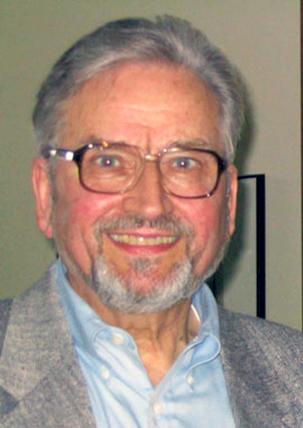Hellmut Ammerlahn joined the faculty of the Department of Germanics at UW as an instructor in 1963, retired as Professor of Germanics and Comparative Literature in the spring of 2008, and taught five years post-retirement–fifty years in all. For many of us that time was too short. When I joined the faculty twenty-five years after he did, I felt honored to become the colleague of the man whose influential essays on Wilhelm Meisters Lehrjahre had long been familiar to me. His work is famous for its exacting standards of clear analysis, its control of the scholarship on the texts, and a precise knowledge of the primary texts that is unsurpassed in the discipline. It is admired and cited equally by older scholars who share Hellmut’s definitions of our discipline as the close study of literary texts and by younger scholars in cultural studies to whose approaches Hellmut himself was not always fully sympathetic.
It would be difficult to overestimate Hellmut’s standing as a scholar on the Lehrjahre. Long before he published his widely acclaimed Imagination und Wahrheit: Goethes Künstler-Bildungsroman Wilhelm Meisters Lehrjahre: Struktur, Symbolik, Poetologie (Würzburg: Konigshausen & Neumann, 2003), he was regarded both in the US and Germany as a scholar whose essays must be taken into account whenever one works on this novel. He achieved this reputation on the basis of his very first two published essays in Deutsche Vierteljahrsschrift in 1968 and Monatshafte in 1972, and he continually enhanced it with the succeeding essays, with his book on Torquato Tasso (1990), and with his most recent book, Imagination & Meisterschaft/Mastery. Neue und frühere Goethe-Studien plus Essays on Goethe written in English, published by Königshausen & Neumann in the fall of 2021, a few short months before his death. For most of us, 400 brilliant pages on Wilhelm Meister and imagination would have seemed enough, but not for Hellmut Ammerlahn. Despite the similarity of this new book's title and despite the fact that it contains three essays about Wilhelm Meister (and numerous references in the rest of the collection), it quickly becomes clear that for him enough is never enough--fortunately for us. The eight essays in this volume, four in German, four in English, two never before published, all deal with imagination, symbolism, and poetics in both Wilhelm Meister novels (and the "Theatralische Sendung"), in both parts of Faust, and in the three fairy tales, with ample passing references to the classical plays, to the poetry, and to relevant essays on aesthetics and science. While Hellmut’s central concerns remain the imagination as agent of trauma, healing and creation, morphological reading of structure, Goethe's symbolic language, and the covert autobiography beneath most of his works, this new book interweaves and unfolds all these themes to make the texts and readings fresh and inventive.
This description does not yet, however, explain fully why I felt so honored to become his colleague. But I had a further reason for anticipation. Long before I came to the University of Washington, I had spent a year at the University of New Hampshire, where my colleague Helmut Pfanner had recently arrived from the University of Washington. Helmut Pfanner was very kind to me, but what I remember most from our interactions was the awe with which he spoke of his brilliant fellow junior colleague there--Hellmut Ammerlahn. He told me a detail about Hellmut Ammerlahn that made me know, years before we ever met in person, that I would like him (whatever he might think of me): Hellmut (our Hellmut) spent the time when he stopped at red lights memorizing Goethe poems! When I came to UW in 1988 I was not only eager to meet Hellmut, but also a little concerned at how I might be received. He was, after all, even before the publication of his Wilhelm Meister book, the author of essays that everyone I knew–of all different ages in our field–considered seminal. What might he think of my occasionally irreverent work on Wilhelm Meisters Wanderjahre, and about having a new colleague who had just published a book on Faust? Hellmut generously made it clear right away that he was glad to have a colleague devoted to Goethe. He also told me point-blank that he had at first not been so sure he liked my sense of humor about the Wanderjahre, but after he read my Faust book he understood how to take it. That was the beginning of a long and wonderful collegial relationship marked by both stimulating exchange and gracious consideration. As it turned out, our interests converged repeatedly and profitably not only on texts, but also on the fundamental questions of what Goethe was about and how he wanted to be read–on the importance of fairytale, allegory, and Goethe’s relation to the Romantic philosophers.
To have colleagues who shared work and critique with one another, who taught undergraduate and graduate students all with profound commitment to rigor, was the greatest joy of being in this department, and Hellmut was at the center of that culture in Germanics. Being his colleague was indeed a great pleasure and a great honor.
Jane K. Brown, April 2022
